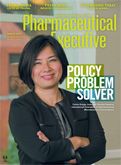Country Report: Indonesia
Indonesia, once considered by global investors as Asia’s “greatest underachiever,” is showing signs of an economic resurgence, nowhere more apparent than in the country’s pharmaceuticals sector.
This sponsored supplement was produced by Focus Reports
Project Director: Lisa Diericks
Project Coordinator: Luis Sancho
Project Assistants: Anna-Luisa Vogt, Pauline Besson
Project Publisher: Mariuca Georgescu
Senior Editor: Louis Haynes
Editor: Patrick Burton
Graphic Assistance: Miriam Léon
Cover © Batik Painting. Artist: Yanci Andreas.
Flickr: Jago Bahaya
For exclusive interviews and more info, please log ontowww.pharmaboardroom.comor write tocontact@focusreports.net
The Awakening Giant?
Not so long ago dismissed by international investors as Asia's "great under-achiever", Indonesia, complete with its sprawling population of 260 million and blossoming middle class, tends to elicit great enthusiasm and fanfare these days. Nowhere is this truer than in the pharmaceuticals and life sciences sectors. Valued at USD 5.5 billion, and registering an impressive seven percent annual growth, the local pharma market stands out as being one of the best performing in the entire region.

Moreover, with a much acclaimed universal healthcare coverage scheme inching towards completion and a singularly unorthodox and vigorous president promising to trim Indonesia's negative investment list and return the economy to heady seven percent growth rates through business-friendly policies, many analysts are justifiably wondering whether South East Asia's 'forgotten giant' could finally be beginning to awake from its long slumber.
At a first glance, the raw figures certainly do look pretty enticing. "Indonesia ranks as a heavyweight market in its region, contributing one third of ASEAN's total GDP, and is developing rapidly... We're talking about the fourth largest population on the planet, expanding at a rate of about five million people every year, a sustainable five percent GDP growth rate, and a pharmaceutical market forecast to double in size by 2020. What is there not to like?" asks Servier's managing director, Alban Nérot. "We simply cannot afford to ignore such obvious potential and thus my primary objective has to be to ensure that this is reflected within our corporate ambitions and results," he enthusiastically adds.
Other actors, however, are proceeding rather more cautiously. "While it is true that an increase in disposable incomes has resulted in a surge of sales for beauty and personal care products and in spite of there being much clamour and hubbub about Indonesia breaking into the top ten global skincare markets by 2019, we still perceive complexities in the day-to-day dynamics of the local marketplace," contemplates Holger Welters, president director of the skincare specialist Beiersdorf, another prolific investor in the Indonesian life sciences space. "It is clear to me that while the underlying potential certainly exists, this potential has not yet been converted into a reality," he warns. "Thus, we have to be highly selective when approaching this kind of opportunity, keep our feet on the ground and set about evaluating these forecasts carefully and pragmatically."
GREAT EXPECTATIONS
Perhaps the single issue that has served to whip up investor confidence more than anything else has been the Joko Widodo administration's ambitious reform of the country's national health service. Indonesian healthcare has traditionally been notorious for its fragmentation. However, in the fall of 2014, Indonesia's government surprised many by launching a radical initiative to establish a compulsory national health insurance system with the aim of providing basic care for all by 2019. Nila Moloek, Minister of Health, reaffirms "The Indonesian government is committed to achieving its goals in the health sector [...] among other things, the JKN program, which has drawn in more than 175 million people."

The scheme, known as 'Jaminan Kesehatan Nasional' or 'JKN,' primarily seeks to improve the livelihoods of citizens stuck in the middle – namely those too poor to afford health insurance, but deemed not poor enough for state support. Under the provisions of JKN, all citizens would now be able to access a tranche of basic health services provided by public facilities, and certain specially designated private ones too, covering treatment for everyday illnesses from chest infections to surgery and chronic diseases.

Dr. Nila Moeloek, minister of health
Rolling out a grandiose welfare program on this scale has logically gone hand in hand with considerably higher state expenditure on public health. "Prior to implementation, annual health insurance for the poor ran to the tune of some IDR eight trillion (USD 602 million). Nowadays this budget for the poor and nearly poor, known as the 'Contribution Assistance Recipient,' has shot up to approximately IDR 25 trillion (USD 1.8 billion)," affirms Dede Yusuf, chairman of Commission IX, the Health and Manpower commission
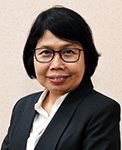
Maura Linda Sitanggang, director general of pharmaceuticals and medical devices, ministry of health
These developments, logically, represent quite a game changer for a pharmaceutical industry long critical of anaemic public spending on healthcare. "Our clients have been much encouraged by the sheer opportunities generated by JKN: the market has overnight become considerably more attractive for them and we are witnessing a surge in investments, acquisitions and joint ventures, all of which affords local companies the prospect to acquire technology and know-how hitherto out of reach. Taking all of this into account, our calculations now place Indonesia's pharma sector as growing at a rate of around seven percent annually over the next four to five years," recounts Wiwy Sasongko, managing director of QuintilesIMS.

Penny Lukito, head, BPOM
Other commentators have been quick to concur. "I know of one medical device company whose products are registered on the government's reimbursement list that has registered a leap in their revenues of 50 percent in the last year alone," confides AmCham managing director, Lin Neumann. "There is no doubt that this reform heralds a very positive step for the industry as a whole" agrees Chris Wren, executive director of the British Chamber of Commerce, "multinationals right now enjoy the largest share of the therapies being reimbursed under the system and they are seeing the public sector outpace the private in terms of growth rate, which is tremendous news when you consider Indonesia's mammoth untapped market."
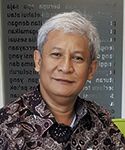
Agus Prabowo, chairman, National Public Procurement Agency (LKPP)
Siemens Healthineers' country lead, Steven Lee, is equally forthright. "This decisive boost to the purchasing power of the public hospital apparatus marks a golden opportunity for Siemens to deliver up new innovations and methodologies and to simultaneously furnish both private and public arenas with state of the art solutions that can radically improve the patient experience. It also fosters the right receiving environment for us to be able to extend beyond an essentially product-oriented approach towards a more holistic offering in which we can act as a true healthcare solutions provider rather than merely a piece-by-piece equipment seller" he observes.
PLUNGING INTO THE RED
Materializing JKN's lofty ambitions, however, is proving to be a formidable task for a national treasury already under increasing strain. "As of today, JKN covers some 178.2 million citizens which is roughly equivalent to 70 percent of the national population, but there remain big question marks over how to render the system financially sustainable in 2019 when it is supposed to be catering for 260 million," admits Fachmi Idris, president director of Badan Penyelenggara Jaminan Sosial Kesehatan (BPJS), the social security agency charged with implementation, "we are fully aware that we will need to do much better in attracting and registering the non-poor segment if we are to properly balance the books and render the program financially stable." Indeed, at present, JKN is running at a chronic deficit with state coffers making up the shortfall.

Parulian Simanjuntak, executive director, IPMG
What, then, is the solution to resolving this systemic financial mismatch? Three solutions have been mooted: increased premiums, reducing the pack of healthcare services, or external capital injections. Increasing the premiums paid by society in order to minimize the economic gap between the premium and the actuarial would, however, compromise the principle of universal coverage because a large segment of the population simply cannot afford any increase. Similarly any reduction in the healthcare package would also leave patients untreated. So far, therefore, the Widodo administration, ever attentive to courting popular opinion, has resorted to option three: injecting whatever cash is needed to breach the gap, in the full knowledge that this cannot be sustainable in the long run.

Darodjatun Sanusi, executive director, GP Farmasi
For Sigit Priohutomo, chairman of the National Social Security Council or 'DJSN,' the only feasible way to square the circle will be to "establish a co-payment arrangement with private industry." "Even though all citizens and employees are obligated to join the system by law, some companies have yet to register their staff, so we need to work towards enforcing the rules," he avows. "As the Indonesian state clearly does not possess sufficient resources to fulfil the national healthcare objective, public and private partnerships (PPPs) would seem to be obvious pathway forward by leveraging private capital and resources to the purpose of enlarging government reach," concedes Philips' Suryo Suwignjo.
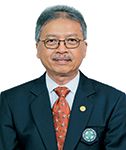
Dr. Kuntjoro Adi Purjanto, chairman, PERSI
"We've noted that the JKN is struggling in three fundamental areas: infrastructure overload, budget deficit, and implementation," reveals QuintilesIMS' Sasongko. "The state is going to have to take a deeper look into how they are spending the money, how much reaches the patient in the end and how they can generate a bigger bang for their buck. Then, on top of all of that, there are going to be some basic structural issues that will need to be surmounted. For instance, the ratio of hospitals and doctors per citizen in Indonesia is clearly too low and unfit for purpose. Right now, Indonesia possesses a comparable number of oncologists to Singapore, which has only five million inhabitants to Indonesia's 250 million!" he exclaims.
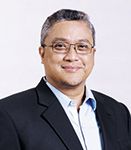
Dede Yusuf, chairman, Commission IX
Many key opinion leaders agree with this stark assessment. "People appear to forget that the universal healthcare program is not only about providing coverage to everyone, but also about ensuring a certain level of quality in health provision delivered at the right time to ensure that there are no catastrophic out of pocket expenses in the event of requiring extensive medical attention; thus it is essential to get a grip on the financial sustainability of the program and start embracing pharmaco-economics in order to align financial restrictions with national health goals," argues Dr. Hasbullah Thabrany, chairman at the Center for Social Security Studies of the University of Indonesia (CSSUI).

Sigit Priohutomo, chairman, National Social Security Council (DJSN)
"Already we are noticing a strong shift towards cost containment with regards to the procurement of medicines within the program and a clear preference for use of cheap, non-branded generics which will ultimately pose a challenge for multinationals whose prices tend to be set higher than the local ones," acknowledges Parulian Simanjuntak, executive director of the International Pharmaceutical Manufacturers Group (IPMG). He has, therefore, been lobbying policymakers to understand that merely focusing on the cheapest therapies is not necessarily the most cost-effective way in the long run and that Health Technology Assessment (HTA) should be deployed to ascertain the added value of latest-generation innovations.
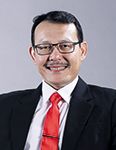
Fachmi Idris, president director, BPJS Kesehatan
Shifts to the procurement system have, indeed, already been enacted in a bid to take costs out of the system. "Formerly, when the procurement system was still fully based on tenders, the process was supply-oriented but, by implementing an e-catalogue, we have managed to shift the paradigm so it is demand driven," points out Agus Prabowo, chairman of the Public Procurement Agency (LKPP).
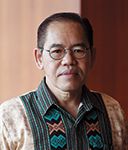
Hasbullah Thabrany, chairman, Center for Social Security Studies of the University of Indonesia (CSSUI)
In view of the scheme's unsteady economic outlook, some of the more wary pharmaceutical actors have been adopting a 'wait-and-see' posture. "To date, we have been hesitant to create any significant dependency on JKN until we can gain greater clarity on pricing rules and timeframes for payment," confides Servier's Alban Nérot. "Although JKN could potentially represent a decent mid-term opportunity for us, it could equally instead adversely impact the P&L of multinational innovative drug developers, by favouring locally sourced generics...and with the on-going uncertainty surrounding its financial viability we prefer to exercise prudence and stick with the tried and tested private market for the time being."
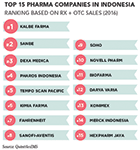
CREEPING PROTECTIONISM
Meanwhile, there are a handful of market distortions that threaten to take some of the shine off the initial jubilance over the JKN displayed by many international companies contemplating market entry. First and foremost has been successive Indonesian governments' longstanding dalliance with nationalism and protectionist measures.
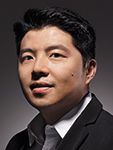
Steven Lee, country lead, Siemens Healthineers
The Widodo administration remains true to the stereotype on this count with a special division having been set up within the Ministry of Health explicitly dedicated towards cultivating a local pharma manufacturing industry, import-substitution industrialization and a spirit of self reliance. "We have designed a 15-year roadmap to transform the Indonesian pharma industry into an innovative industry. This plan consists of three stages of five years respectively. We would focus on cooperation and transfer of technology in the first five years. The second period of five years would focus on acquiring and developing the technology, and the last five years would be to witness the local industries launch their own, locally manufactured products by mastering their own innovative technologies. And, overall, we would like to see the local companies invest higher percentages of their revenues into their R&D divisions", declared Maura Linda Sitanggang, director general of pharmaceuticals and medical devices at the Ministry of Health.
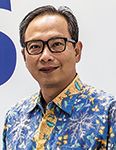
Suryo Suwignjo, president director, Philips
"We are collaborating closely with the government to increase the power of indigenous pharmaceutical firms and have set a target of increasing the exports of local players to 30 percent of production capacity. Meanwhile we are pulling out all the stops to promote Indonesian self-sufficiency of raw materials such as active pharmaceutical ingredients," attests Darodjatun Sanusi, executive director of GP Farmasi, the National Association of Local Companies in Indonesia.
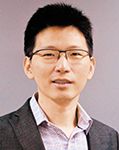
Wiwy Sasongko, managing director, QuintilesIMS
MARKET DISTORTIONS
Beyond needing to align with evermore-stringent local content regulations, many new market entrants also report finding themselves having to contend with a myriad of local idiosyncrasies that hamper their efforts to establish a smooth-running business. "Indonesia's drug registration timeframe, for instance, stands as one of the slowest in the region and, consequently, products are not introduced in the country as fast as they should be to the extent that medical tourism is starting to become a concern with affluent Indonesians instead opting to be treated abroad in countries such as Thailand, Malaysia or Singapore where they can more easily access latest-generation, innovative treatments," warns Simanjuntak.
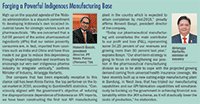
At the same time, many international drug developers have noticed an erosion of in-country profit margins as a result of a proliferation of counterfeit medicines. The National Association of Hospitals (PERSI), for example, estimates that unregistered drugs represented as much as 10 percent of the total Indonesian pharmaceutical value in 2016.
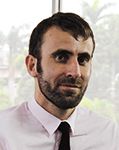
Benoit Martineau, president director, Sanofi
Meanwhile many new entrants severely underestimate the losses incurred from navigating the country's patchy infrastructure and logistical complexities. "It's important to consider that Indonesia constitutes the world's largest archipelago composed of more than 17,000 disparate, diverse and in some cases poorly connected islands and, therefore, entails significant distribution and patient access barriers. Even once you've secured all the requisite approvals, physically getting your product to the intended market place can be an expensive, time-consuming and logistically tricky business," warns PERSI's chairman, Dr. Kuntjoro Adi Purjanto.

Mada Shinta Dewi, country manager, Mundipharma
"There's no denying that Indonesia has always been very challenging in terms of regulatory and structural issues; it has not wrongly earned the reputation of being an unpredictable business environment with certain lack of transparency, but those issues are now gradually being resolved and the commitment to universal healthcare is certainly a very strong statement of intent," reassures idsMED's president (core markets) and senior managing director for Indonesia, Rufi Susanto.
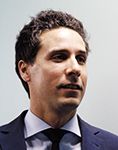
Alban Nérot, managing director, Servier
WINNING STRATAGEMS
What, then, are the secrets to making a success out of Indonesia's high-risk, high-reward business environment? For Benoit Martineau, president director of Sanofi, flexibility and adaptability are two useful assets. "Despite our positioning as the number one MNC in the country, I would say that Indonesia still represents one of the most challenging markets in the South East Asian theatre of operations. This is the type of market where you have to be quick on your toes... being able to anticipating future dynamics in a fast-changing, fluid environment and react rapidly is highly advantageous."

Holger Welters, president director, Beiersdorf
Being able to spot emerging trends and being a first mover in aligning to them has certainly proved lucrative for many actors. Mindful of Indonesia's rapid economic development, Siemens has been astutely re-orientating its offering to cater to the needs of a brand new middle class in the ascendancy. "We have been increasingly pivoting towards the middle and upper-middle class private market," expounds Siemens Healthineers' Steven Lee. "Our intention is to retain those patients that are undergoing treatment abroad by offering them higher standards in technology and innovation back home in Indonesian hospitals. The industry as well as the government are endeavouring to reverse this patient outflow and we detect a real effort on the part of all parties to enhance standards of service quality so that is one specific niche that we have selected to scope in on."

Rufi Susanto, president (core market) and senior managing director, IDS Medical Systems
Beiersdorf, which currently exhibits one of the highest growth rates in the skincare category, meanwhile puts its own success firmly down to a triple combination of sustained investment, speciality focus upon a core competency and the ability to drum up new levels of demand where previously little existed. "Providing education about the benefits of our products has been absolutely crucial in this market to enhance the penetration of our brands," confesses Holger Welters. "Though we encountered a pre-existing market of sorts, we found ourselves having to further develop and stimulate the customer need by communicating the importance of skincare, and raising awareness over the dangers of its negligence. For instance, the concept of sun care tends to be well ingrained in peoples' minds in developed western markets, where people are highly conscious of the risks of skin cancer, but tends to be lacking somewhat in underdeveloped, emerging markets like this. We are proud to have already attained a lead position in therapies for injured skin through our product Hansaplast®, which demonstrates that this strategy is working," he notes.

Christian Eberle, president director, APL
Mundipharma, a global leader in pain management, narrates a not entirely dissimilar story of having to draw attention to a very real unmet need in the market, but one that had not always been understood as such locally. "We discovered that the penetration of pain management treatment was disproportionately low in Indonesia due to a confluence of cultural, regulatory and educational factors," reveals Mada Shinta Dewi, the company's country manager. "Firstly, Asians, in general, do not tend to complain so much about pain, because in their cultures it is perceived as impolite to be making a fuss. Secondly, opioid medicines are highly restricted on the local market. Thirdly, there has barely any education of pain management in the medical universities... We have therefore made it our business to develop this arena and spread understanding about the dynamics of pain and its alleviation," she explains. Right now, Mundipharma is concentrating its efforts on applying pain management knowledge in the treatment of cancer patients, one of the primary causes of death in the country. "It's a long journey that needs to be supported by a lengthy repertoire of medical education initiatives in collaboration with the medical associations, pharmacies and hospitals. The results so far are very encouraging, but there is still a long way to go," concludes Dewi.
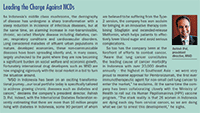
Indeed one overriding hallmark of successful ventures in Indonesia tends to be that they engage with the marketplace on its own terms instead of trying to transplant a business model devised elsewhere. "We ascertained exactly what the local market and local clients required and remodeled our offering to match accordingly. Doing business in this very young, raw market is a world away from the much more static Malaysian ecosystem or a highly developed and rigidly structured marketplace like Singapore. The demand in Indonesia right now is not necessarily for the most high-tech products, but those that fully serve their purpose with an affordable price," explains idsMED's Susanto.

Djonny Hartono, president director, Enseval
THE QUEST FOR PARTNERS
Enlisting the support of local entities to assist with commercialization can also offer considerable advantages to multinationals as they set about trying to navigate the Indonesian market's highly complex contextual environment. One such outfit, Metro Drug Indonesia (MDI), has positioned itself as a partner of choice within the 'commercial sales organization arena,' under which its clients maintain their business license and distribution activities, but outsource the task of fostering demand for their products. "Though we also offer full-agency end-to-end solutions, we identified considerable demand on the part of the MNCs for a local mentor with expertise in marketing value-added services that overcome the inherent challenges of the market," recalls president director, Agus Darjono. "Clients predominantly demand our marketing insights as well as commercial actions that will create demand for their products through stronger penetration rates in different channels like clinics, hospitals, and other healthcare institutions. MDI's network with key customers and opinion leaders is one of our fundamental operational underpinnings since they ensure the accurateness of our commercial insights and ultimately, the success of our demand creation initiatives," he elaborates.
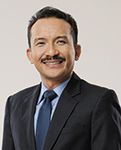
Agus Darjono, president director, Metro Drug Indonesia
Indonesia's single largest distributor, Enseval, has also been noticing the impact of the implementation of JKN. "Geographically we have seen an increasing demand for our services in more remote provinces like Kalimantan, Sulawesi and Papua," observes president director, Djonny Hartono, "and also registering rising demand according to socio-economic strata. The poor are discovering their right to healthcare while a growing middle class is seeking higher-quality treatment. The task at hand for a distributor like us is to ensure the appropriate supply of pharmaceuticals, medical devices and equipment to ensure that the appropriate healthcare demand can be met on all levels."
Conscious that, while digital disruption and mobile health can represent important breakthroughs in any emerging economy, the potential is amplified in the fragmented geography of Indonesia, Enseval has been investing heavily in modernizing and upgrading its processes. "In the sales and distribution side, we have already introduced our 'Enseval network order system' that eases our client commands through web and mobile applications without any geographic and time restrictions.
Meanwhile, Anugerah Pharmindo Lestari (APL) plays a significant role in assisting drugs companies and healthcare providers alike with the distribution and logistics part of the value chain. "While JKN represents a great step forward for the Indonesian people, its implementation does pose new challenges in the activities of administration and collection management so APL has been taking a proactive stance to streamline these processes through optimized cold chain management, a consolidation of our national distribution centers and the integration of latest digital technologies," confirms Eberle, president director of APL.
At the same time, APL has also been experiencing a significant upswing in demand for its commercialization and marketing services. "We deploy a unique market insight and benchmarking tool, which gives clients strategic and tactical information to support their decision-making. Through our insider understanding of the rapidly evolving regulatory environment and our extensive business intelligence capabilities, we are uniquely positioned to execute an effective sales, brand development, channel management and marketing strategy," proclaims president director, Christian Eberle.
THERE FOR THE TAKING
What, then, to make of a market that seems to promise so much, yet simultaneously poses such glaring drawbacks? While it remains a complicated place for doing business for the uninitiated, there can be no doubt that those companies that have cracked the market are generating good returns.
Boehringer Ingelheim is perhaps a good illustration of this point. The company has been staunchly and resolutely believing in the potential of the archipelago since the 1960s, even acquiring a manufacturing plant in the early 2000s and continuing to invest heavily in developing its local footprint. This perseverance has, indeed, been paying off and the company now finds itself one of the fastest-growing players within the top 20 for the second year in succession.
"Indonesia remains a tricky market for MNCs because local players still dominate some 70 percent of the pharmaceutical value and the pressures on the public purse are clear for all to see...Nevertheless, when you peer deeper into how the industry is organized, it becomes clear that the local players are actually dominating the OTC segment, whereas the prescription market is much more finely balanced with 45 percent of the branded prescription medicines value in the hands of MNCs," assesses Jorge Wagner president director of Boehringer Ingelheim.
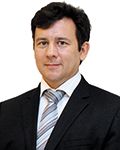
Jorge Wagner, president director, Boehringer Ingelheim
"Yes, compared to other markets, innovative medicine remains poorly represented on the national pharmaceutical agenda, so there is a massive amount still to do, yet it is precisely because of this that Indonesia constitutes a market where we can make a big difference and where a company like ours, so long as it perseveres and conducts itself smartly, can reap real rewards," he concludes.
